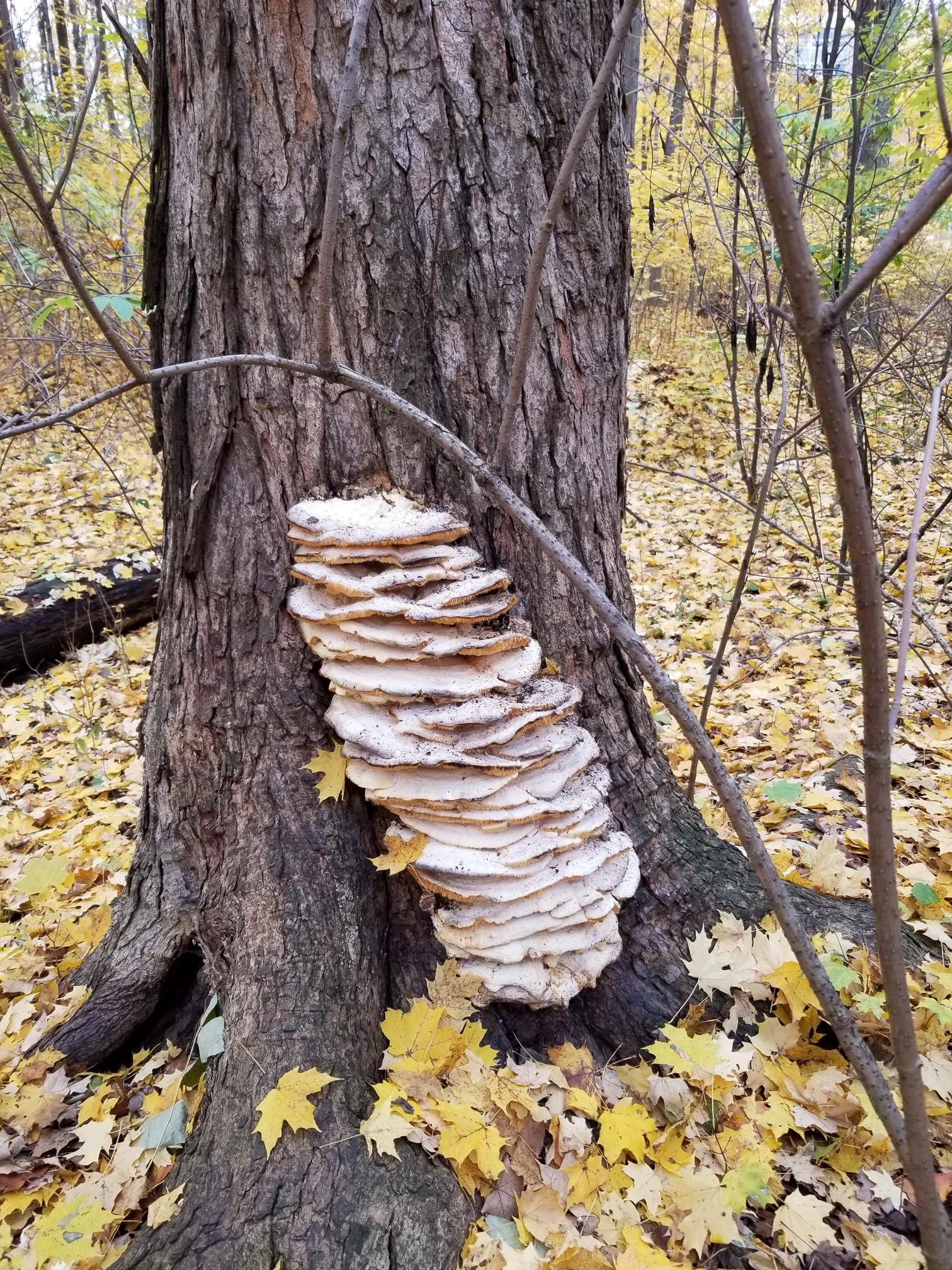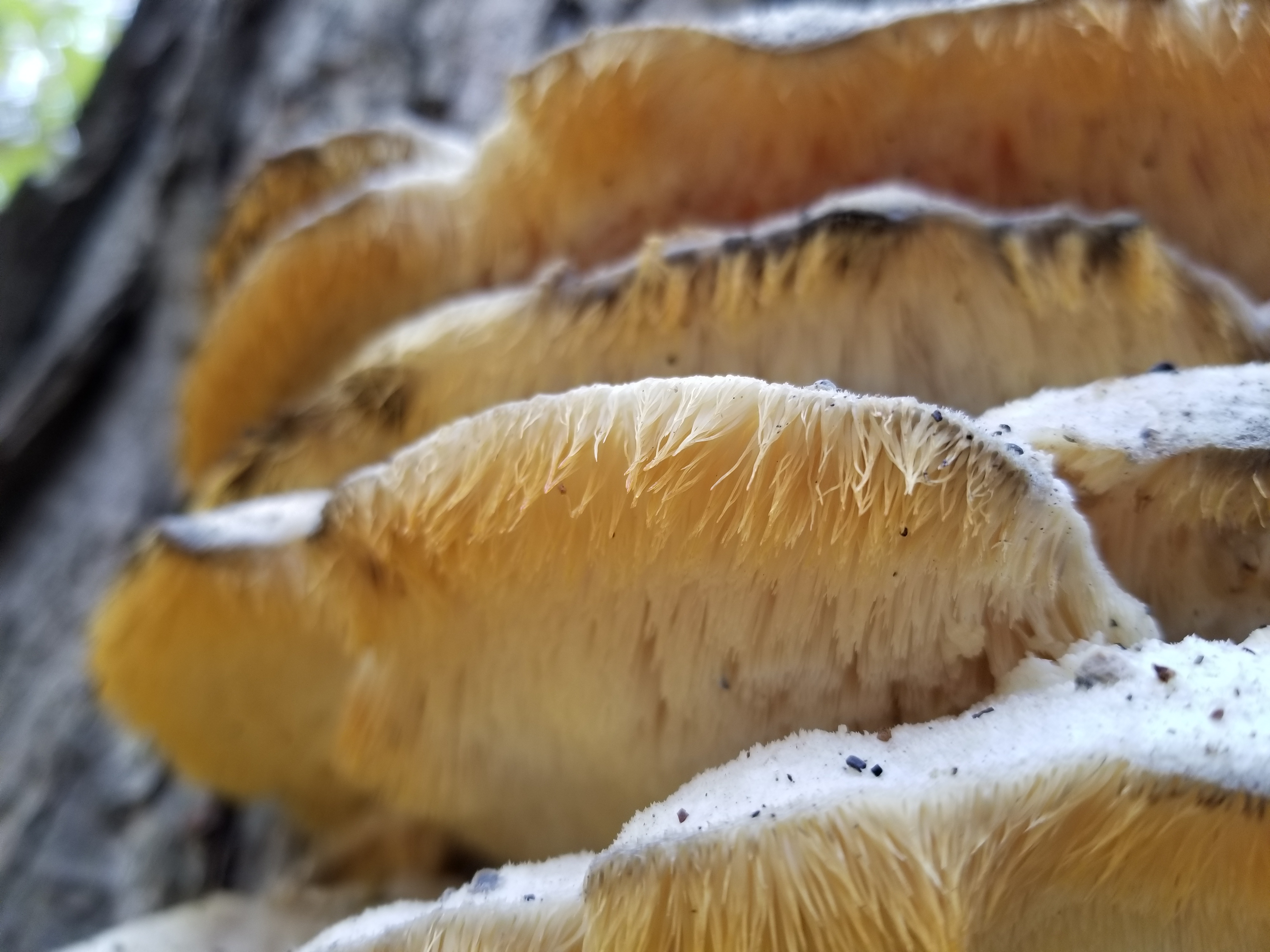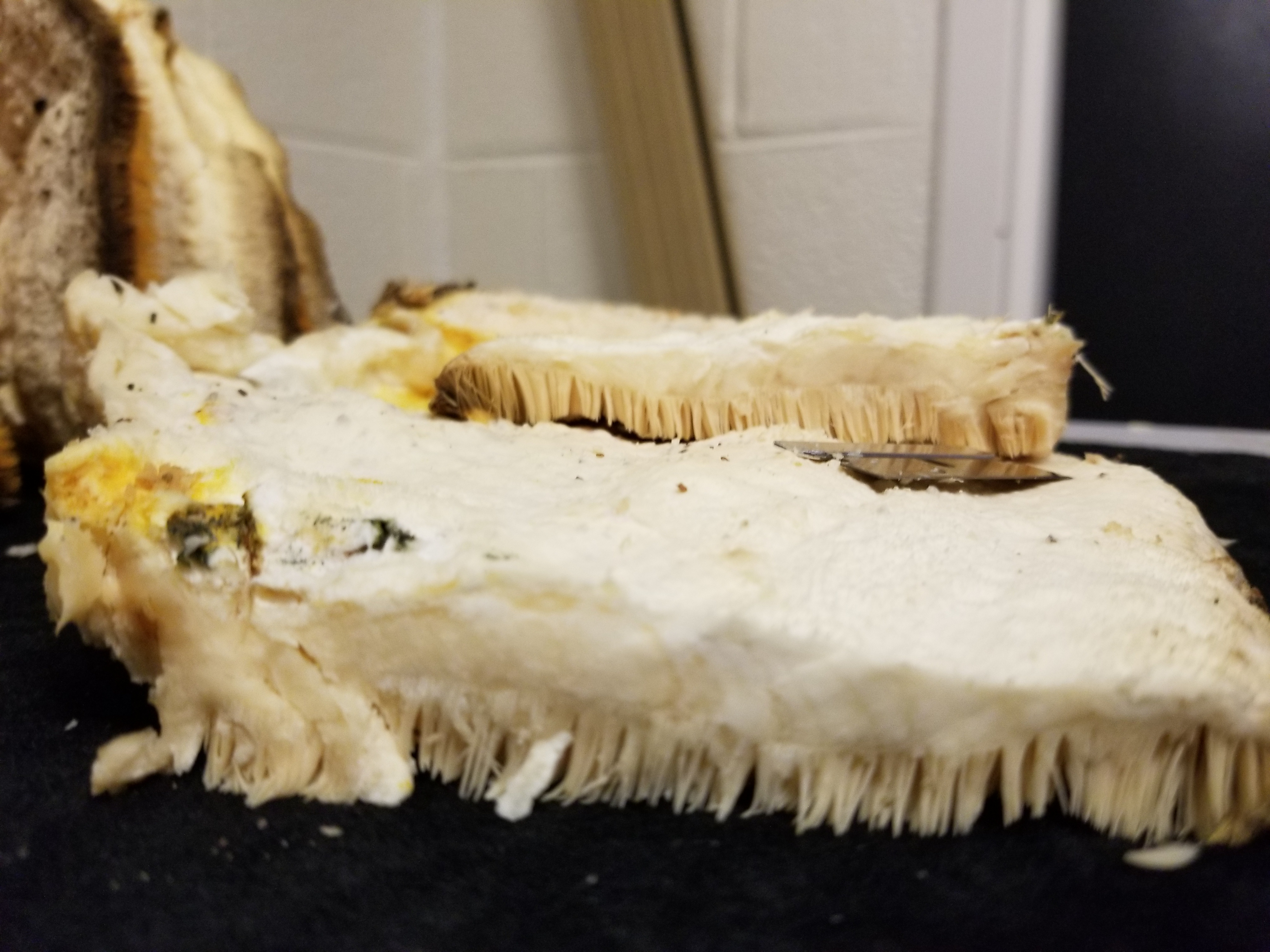Climacodon septentrionalis
Climacodon septentrionale is exciting to see because it is extremely large and in clusters on the tree bark.

Climacodon septentrionalis (Fries) P. Karsten
- Phylum: Basidiomycota
- Class: Agaricomycetes
- Order: Polyporales
- Family: Meruliaceae
- Genus: Climacodon
- Species: septentrionalis
Climacodon septentrionale is exciting to see because it is extremely large and in clusters on the tree bark (Figure 1). Unfortunately it is a plant pathogen that attacks the central heartwood in maple and sugar maple trees causing it to rot.
The cap is 10-30 cm wide convex becoming a rising and falling form and is overlapping heavily. The color changes over time with age. First off-white, them cream color and finally brown. It has no stem and is fused to a thick, flat mass. The cap is also hairy to rough (Figure 2). Even though this mushroom looks like a polypore, a noticeable feature about this mushroom is the teeth which are densely packed but flexible (Figure 3). This is why its common name is northern tooth. The teeth change color as it ages similar to the cap;white then becoming cream and then brown. The basidiospores are located on the teeth. This is important that it has teeth and hence more surface area for the spores.

The spores are elliptical, colorless in KOH and smooth. There are clamp connections present. The spore print is white.
References:
Baroni, Timothy J. (2017) Mushrooms of the Northeastern United States and Eastern Canada. Portland, Oregon. Timber Press. p.474.
Kuo, M. (2010, May). Climacodon septentrionalis. Retrieved from the MushroomExpert.Com.





 Print
Print Email
Email



